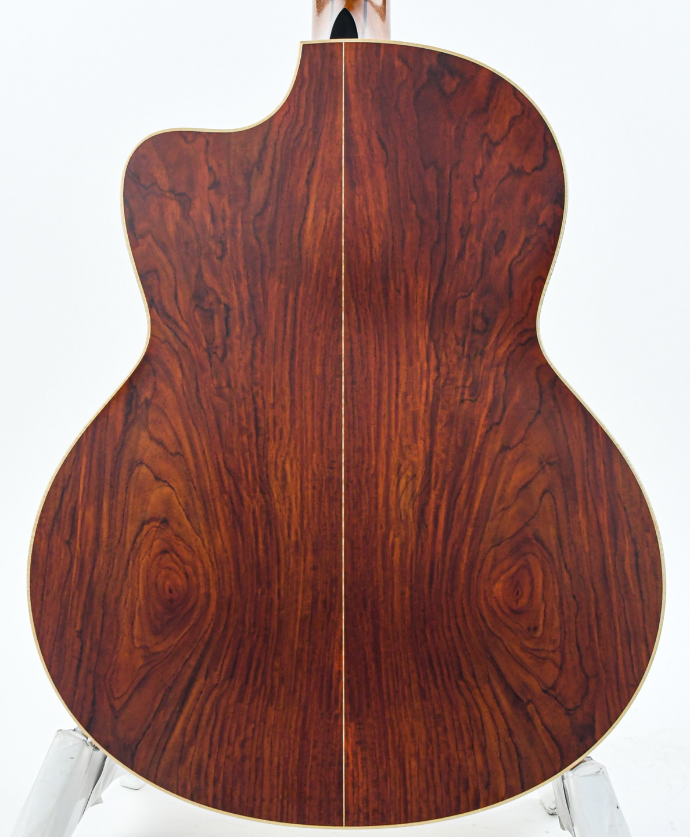Cocobolo, or Dalbergia Retusa, is an awesome tonewood. It is obviously related to the widely used Indian Rosewood and offers many of the same qualities, such as beautiful, clear highs and deep lows and combines that with the delicious, natural reverb that we associate with rosewood. Cocobolo does all of the above very pronounced and powerful, and as a result some luthiers sometimes compare it with Koa. Other luthiers go as far as putting it on a par with Brazilian Rosewood which is the holy grail of tonewood. This is a bold statement, because every piece of tonewood is different, but we have seen several cocobolo cannons pass through our shop that did remind us of that great bell like growl we know all to well. And did we mention the looks! Sometimes cocobolo appears almost like 'normal' rosewood, but if you are lucky, you will find cocobolo with hallucinatory red / orange patterns interspersed with dark brown and black. Insane!


Cobobolo sometimes has some very dramatic 'sapwood' figuring, like this one by McNally.
Cobobolo combines surprisingly well with almost all types of wood for the top. Pair it with sitka spruce and that those clear highs and deep lows get friendly and warm mids for a great overall balance. Add a powerful Adirondack top and it will allow you to press cocobolo's accelerator even deeper. Lowden is one of the first major builders to appreciate cocobolo and linked the tropical wood to the sweet sound of cedar to create something magical. As far as guitar models are concerned, you can go in many directions with cocobolo, because it gives smaller models a bit more depth and the somewhat larger guitars get a little more 'umpf' and sparkle. Fingerstyle guitarists will certainly appreciate cocobolo, because the volume, combined with a very direct response and long sustain, ensures that the notes almost jump off an acoustic cocobolo guitar. Strummers often get all the headroom they will ever need.

Mexican rosewood
Cocobolo grows throughout Central America and especially in and around Mexico, it is therefore also called Mexican Rosewood, but that is not entirely true. Because of its beautiful appearance, cocobolo is very popular in the furniture industry and that is where the vast majority of cocobolo goes. The guitar industry uses only a fraction of that. Due to its popularity, more and more replanting programs have been developed throughout Central America in recent years and that fortunately guarantees the availability of cocobolo for the coming years.
Many luthiers praise the sound and looks of cocobolo, but the structure and oil-rich wood pores sometimes drive them to despair. The wood can be a bit crumbly, difficult to sand and not easy to glue and finish. The laboriousness of cocobolo is reflected in the price, because it usually does not come cheap. But once those elements are under control, the result is well worth the effort.
Do you also want to play a cocobolo guitar? In our Guitar Villa in Dedemsvaart we have well over 1.000 guitars in stock, so the coffee and the cocobolo are ready!
Want to know more about other tonewoods? In this article we explain the differences.